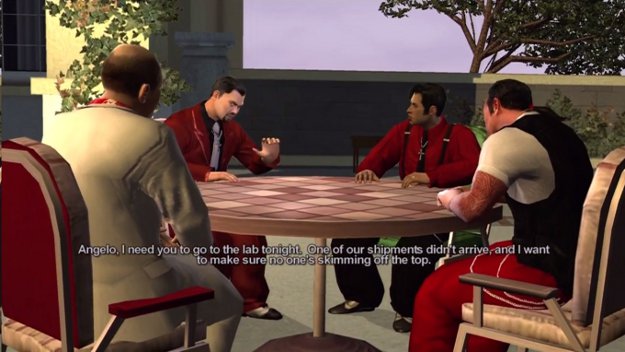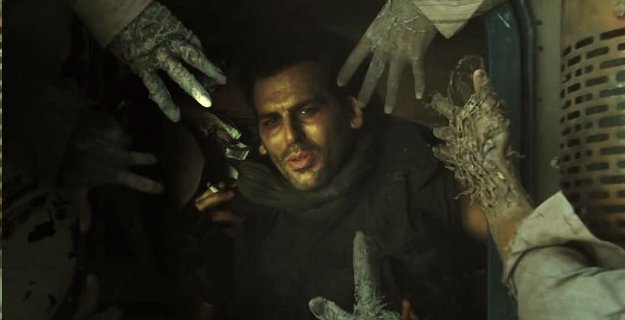Why the Gaming Industry Can’t Afford to Ignore Latinos or Women

From Al Dia and republished by our content partner New America Media:
In an imaginary world where video game players were only allowed play characters of their own ethnicity, Latinos would be screwed.
They could choose between Victor Gonzalez, one of the main thugs of “Los Carnales” who has survived a dozen attacks by the Vice King. Or the more sophisticated Carlos Oliveira, a mercenary from South America on the verge of a nervous breakdown during the zombie crisis on Earth.
These not particularly attractive examples are part of the average 3 percent of video game characters recognized as Latino.
Of that 3 percent, by the way, less than 5 percent are actually playable, according to the study “The virtual census: Representations of gender, race and age in video games.”
The numbers are depressing and the variety questionable. But despite the apparent apathy of the industry, recent studies have shown a growing interest from the Latino market in both purchase and expansion of video game systems, a growth that the industry has barely begun to notice.
According to Simmons, Latinos are 32 percent more likely than non-Latinos to consider video games their main source of entertainment. In addition, Latinos are 54 percent more likely to buy a video game the day it’s released than non-Latino gamers.
In 2012, according to Microsoft XBOX sales, Latino gamers contributed to 23 percent growth while non-Latino gamers grew a mere 10 percent.
That same year video games were the number one game/toy purchased by Latinos – 7.8 million bought video games.
“The video game industry should pay more attention to the Latino market but most companies just don’t do it. Many of them have specific teams that take care of Latin American market but forget about the Latinos in the U.S., which have much more buying power than other countries in Latin America,” said Juan Carlos Alanis, founder of TECHnotas.com and LatinoGamers.com.
“The response has been excellent. Both projects were born of passion for technology and video games. They were developed as a creative expression that started as a hobby and now reaches more and more people that share my interest,” Alanis said.
The Mexican blogger choose to publish its blog in Spanish to reach a more mature Latino audience. “I am talking about the parents of the younger generation. They need information to guide their kids when it comes to choosing video games. There is also an opportunity to serve a community with limited access to video game information in Spanish,” Alanis said.
According to the blogger, Latinos are just as fanatics about gaming as any other ethnic group.
“One would think that video game companies know this, but it really seems that they have chosen to ignore the reality in our society and about Latino consumption in America,” Alanis said. “A few companies, among them Nintendo and Xbox, have staffers dedicated to our community and users. but most don’t invest in the community.”
A lost opportunity for Latino kids?
Despite the underrepresentation of minorities in video games, Black and Latino children invested the most time in video game consoles.
“And they’re really not able to play themselves. For children, the stakes may be slightly higher, many have suggested that games function as crucial gatekeepers to interest in technology, which translates into education and careers in mathematics and science-related fields,” said Dmitri Williams, a social psychologist and assistant professor at the USC Annenberg School for Communication, in an interview with Voxxi.
While digital games are still far from replacing teachers in the classroom, technology experts say they are tools that can help do the job more effectively. “Video games may be indicative of a shift in the way we construct narrative. A good argument could even be made that video games are the new mythology, a kind of non-linear interactive storytelling that shapes the conscious attitudes of today’s youth,” argues Jordan Shapiro in the blog MindShift’s Guide to Games and Learning.
“Game-based learning and electronic media enable us to blur the boundaries that separate the delivery of content, drilling for practice, and assessment. And in an educational atmosphere where those boundaries dissolve, the textbook becomes obsolete,” Shapiro wrote.
Game designer and writer Carlos Hernández also believes in the educational potential behind video games.
“I am definitely a huge player and fan of video games for all my life, but I am also an educator. One of the things that interests me is an emerging field called ‘Game Based Learning,’ in which the teacher use the ideas of how video games are made and imports them into a classroom,” said Hernández, an English professor at the Borough of Manhattan Community College (BMCC).
Hernández is the lead writer of the new video game “Meriwether,” a game that places you in the middle of Lewis and Clark's epic adventure across the North American continent. According to the Cuban-American, the project is a historically-accurate 3D computer role-playing game. “I developed the storyline and the dialogues. There is a lot of role playing and just the dialogue alone is about 100,000 words, the length of a medium-sized novel.”

Born in Illinois, Hernández e has been a gamer since age 4. Hernández had the chance to experience the birth of video games in the 1970s, first through the iconic Pong (1972), one of the very first arcade games, followed by Atari 2600 (1977).
“They were so simple and it is amazing how successful they were . Pong is the system that launched Atari, my generation had the chance see it as an emerging art form. The video game not only changed the way we experience different kinds of stories, but it also changed games forever,” Hernández said.
Can I play with your Nintendo DS for a bit?
Among the wide range of content for video games, there have been a few that ended up in the side of the politically incorrect.
One of them, “English for Everyone” (2007), is a game where a new Mexican friend will borrow your Nintendo DS and then run off south of the border. To recover it you must cross into Mexico and find the ‘thief’."
Or the highly controversial “Border Patrol” (2002), which allows you to kill Mexicans trying to cross into the United States.
“When we see Latino characters they tend to play very stereotypical roles and they have, for example, very thick accents. But this is not just Latino, this is true for non-white characters,” Hernández said.
He added that players usually only have the option of using a single character, usually, a white man. “It is unfortunately the case that the industry is still white and male predominantly. Whenever we make art, we are simplifying life: describing a society or implying a third dimension in a painting. Those simplifications can lead to poor depictions, as happens when video games depend on stereotypes for characterization. But all art runs that danger by its very nature.”
All in all he feels optimistic for the growth of minorities in the industry.
“We can’t have just one Latino character, what we need is to create a culture in which it is perfectly natural to have all sorts of characters, from all sorts of Latino backgrounds with very different experiences,” Hernandez said.
For his part, Alanis said that because the industry has globally grown so much, there is much more opportunity for diversity.
“Unfortunately in video games it happens the same as in Hollywood productions. The clichés and misinterpretations are the norm," Alanis said. "I believe that more than an offense, the creator’s mistake is the failure to include diversity in their characters."
The blogger added that years ago it was impossible to find characters of different ethnicities or even women as protagonists in video games. "But this is changing gradually, though clearly there is much to be done. Many companies are integrating more diversity into their stories, now is possible to find characters from various groups, also women and characters from the LGBT community."

Women gamers can no longer be ignored
Another minority that is grossly underrepresented within and outside the industry are women gamers.
“I personally experienced the stereotype that women can’t play video games. Usually players in their mid-20s or 30s, they think that they have been playing from day one, and automatically think they are much better at gaming than women are,” said Gabbie Arias, a Mexican-American from California.
Among the titles she has played religiously is World of Warcraft — the game where humans, orcs, elves and gnomes fraternize on digital battlefields, usually online or with friends in Google Hangouts.
“In the World of Warcraft community a lot of women, right off the bat, don’t say that they are female players (in order) to avoid comments. I usually wait a while and then I let them know I am a woman. I think guys are judgmental because they automatically assume women only play through certain rules or characters,” she said.
Arias has played World of Warcraft since 2007, starting with eight hours a day. In recent years she’s dropped down to five hours, twice a week. “But on the weekends don’t even ask me, ‘cause I am on it all day.”
For Arias video games are much more than a hobby. A few years ago she was diagnosed with lupus, a disease that affects the immune system, and games have helped her face the challenges of her condition.
“It has helped me relax and take things slow. It also allows me to let off steam if I am having a bad day,” Arias said.
She numbers among the 48 percent of women “gamers” in the United States, a group that has long fought for greater representation, both in terms of quantity and quality.
One of the most active Latino names on the Web is Puerto Rican blogger Maria Vargas, a.k.a. “la chica gamer,” a true follower of everything video games and technology.
"First I was going to publish my blog in English. But when I tried to search for other 'gamers' that wrote about video games in Spanish I found absolutely nothing. That made me choose Spanish for my blog," Vargas said.
On her page you can find news, reviews, information on comics and movies, in addition to the latest on XBOX, PC, Playstation and Wii U.
"The industry is mainly composed of men. In my experience I can count on my fingers the number of women who write about videogames in Spanish and I’d have plenty left over,” Vargas said.
“La chica gamer” admitted she is at war with the way women are portrayed in video games, always with skimpy clothes and hard-to-believe body dimensions.
"My ideal female character would be just like any male character, someone who can fight, but appropriately dressed. Feisty and smart ... and if she is Latina, even better," Vargas said.
From Al Dia and republished by our content partner New America Media






























































































































































































































































































































